Emma Jameson – 13 January, 2015
This show at Corban's is a skilled mixture of various aesthetic styles and media that complement each other in their subtle intricacy, layered meaning, and originality of artistic approach. Against the backdrop of the heritage building, the works are both timeless and modern, steeped in both a soothing sense of nostalgia and an exhilarating push towards new aesthetic experiences.
Auckland
Tessa Laird
House of Bats
Sam Thomas
Serf Club
Various artists
Works on Paper: The Annual Affordable Art Show
5 Dec 2014 - 8 Jan 2015
Strong in narrative, aesthetic appeal, and varied artistic techniques, the latest show at Corban’s is impressive. Featuring works by Tessa Laird, Sam Thomas, and a group show of established and up-and-coming artists, the beautiful heritage rooms of the gallery are replete with stylistic and textural variety.
Tessa Laird’s show, House of Bats, is striking in its ability to transport the viewer to an evocative imaginative landscape. Although in fact an endangered and vulnerable species, bats have throughout the centuries come to signify that which is unusual, frightening and ominous. Associated with Gothic novels like Dracula, they are not seen as natural beings at all, but rather as threatening signifiers of another world and time, enshrined and perpetuated through folklore and fantasy. Laird plays with these themes in her exhibition. Placed on an antique pentagonal wooden plinth against a hand-made wallpapered wall, her show evokes a gothic domestic interior. Replete with an uncanny nostalgia for an un-experienced, unknowable time and place, her room seems to take as its inspiration the interiors of the cavernous and cobwebbed castles frequently seen in old fashioned vampire films. Designed by the artist (and available for sale), the floral, patterned vintage wallpaper is scattered with painted black bats and serves an integral function in solidifying the thematic and aesthetic qualities of the installation.
This manipulation of domesticity is a key feature of the ceramic objects. Arranged on the plinth are solid blocks of ceramic books. Their rustic appearance and titles such as Antipodes of the Mind, Nightside Eden, Walter Benjamin’s Grave conjure up connotations of gothic, imaginary landscapes seemingly ensconced in both the distant past and an unascertainable other world. From these bases rise coral-like plants and trees, encrusted with eyeballs, skulls, snakes, and starfish that visually transcribe the images conveyed through the books’ titles. On top of Walter Benjamin’s Grave, Society of the Dead and Queequeg’s Grave is a black form covered with skulls, while a tree covered with snakes and apples emerges from Nightside Eden.
The works are beautifully crafted, with varnishes, glitter, and intricate patterns, providing visual interest and prompting a dynamic viewer engagement. A favourite of mine was a tree emerging from an opened book, with bats and glittery leaves covering its pages. Its rich textures and tones render it both render it both a beautiful aesthetic object and a powerfully suggestive narrative tool. Although similar to Janet Beckhouse‘s ceramics (seen at Ivan Anthony in May this year) in their evocation of another world, Laird’s ceramics are distinctive for their more overt playfully ghoulish references and for their fusion of functionality and fantasy. Although candle holders, their functionality also strengthens their fantastical elements, bringing to mind the flickering candle light seen in the Gothic manors of horror films. The bright colours of the wallpaper, however, suggest a more playful interpretation of Gothic interiors, emphasising the falsity of the association of bats with terror and evil. Instead, their association with ‘spooky’ elements brings to mind fond memories of beloved books and films that once inspired childlike fear and imagination.
Sam Thomas‘ show, Serf Club, is equally impressive. Completed during the artist’s residency in Kuala Lumpur, the works on paper and aluminium display an appreciation and understanding of the local topography and its culture. Various rectangular segments of brown paper are linked together through pencilled drawings of rocky terrains. On each segment is a postage stamp featuring pop, sports and film stars of the 1980s and 1990s. The implication here is perhaps of cross-cultrual interaction: the stamps signify the imprinting and infiltration of ‘Western’ culture onto different landscapes (be they cultural or geographical) and also the segmentation and dispersal of these territories through the distribution of postcards.
The embossed aluminium panels are a visually striking elaboration upon this cross-cultural theme. Sections of gold, blue, cream and brown tones create rocky, mountainous terrains. The complex techniques of these works are impressive for their stunning appearance and also for their subtle integration of different cultural practices. Thomas has incorporated the embossed aluminium practices that he learnt in India with the carving skills he acquired from living in Rarotonga and also from working with the Mehi Mehi tribe. The works are solid and delicate, majestic and subtly beautiful, their thick forms projecting out into the viewer’s space and reflecting natural light from their metallic gold passages.
The affordable artwork show, entitled Works on Paper features a satisfying selection of various manipulations of the paper medium. Personal favourites of mine were the works of Victoria Jung, who seems to take as her inspiration the texture and volume of the paper surface. Slain is a work composed of white plaster slathered onto paper, strokes of pale blue watercolour paint providing calming interludes against the monochrome background. Other works of particular note were the brightly coloured patterns of Alison Granville and the black and white photograph Light taken by 12 year old Lukah Ashton. All priced between $80 and $200, the works in this show are not only affordable, but also aesthetically pleasing and impressive.
This show at Corban’s is a skilled mixture of various aesthetic styles and media that complement each other in their subtle intricacy, layered meaning, and originality of artistic approach. Against the backdrop of the heritage building, the works are both timeless and modern, steeped in both a soothing sense of nostalgia and an exhilarating push towards new aesthetic experiences.
Emma Jameson
Recent Comments
John Hurrell
If you read this review you will notice that Tessa Laird (now working in Australia) has a bit of a ...
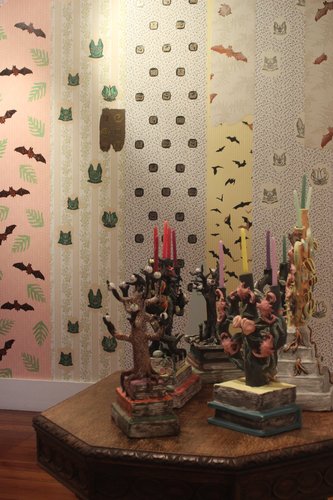

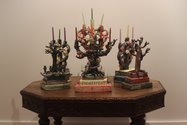




 Advertising in this column
Advertising in this column Two Rooms presents a program of residencies and projects
Two Rooms presents a program of residencies and projects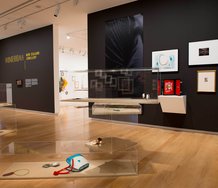
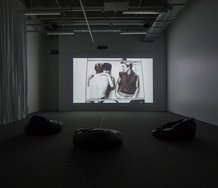

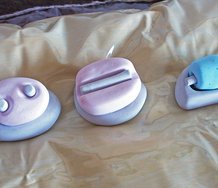
This Discussion has 1 comment.
Comment
John Hurrell, 5:11 p.m. 12 December, 2018 #
If you read this review you will notice that Tessa Laird (now working in Australia) has a bit of a fixation on bats. Curiously her very latest book is called 'Bat,' one of the series of animal publications put out by Reaktion, a company known normally for its books on subjects like conceptual art, mapping and collecting.
'Bat' is quite an achievement. It deals effortlessly with scientific research, folklore, philosophy and popular culture. It is an excellent read, with terrific photographs (a characteristic of the whole series. Others include 'Frog' and 'Octopus'--all three are in the Auckland Public Library.)
Anybody who has spent serious time in the Australian or European countryside will understand Laird's passion for these 'flying mice' (I'm thinking of pipistrelles). They are enthralling, as is her book.
Participate
Register to Participate.
Sign in
Sign in to an existing account.